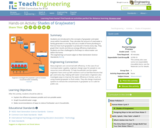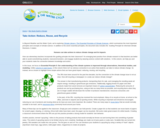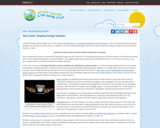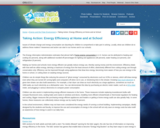
This resource provides detailed information about the California condor, as well as several pictures.
- Subject:
- Science
- Material Type:
- Reading
- Provider:
- San Diego Zoo Wildlife Alliance
- Date Added:
- 10/03/2023

This resource provides detailed information about the California condor, as well as several pictures.

This resource provides detailed information about the chimpanzee, as well as several pictures and audio clips.

This resource provides detailed information about the elephant, as well as several pictures and audio clips. [1:00]

This resource provides detailed information about the flamingo as well as several pictures. [2 min, 9 sec]

This resource provides detailed information about the Galapagos tortoise, as well as several pictures.

This resource presents detailed information about the hippotpotamus, including several photos and an audio clip.

This resource provides extensive information about otters, including photos and an audio clip.

This resource provides detailed information about the warthog, as well as several pictures.

There are many misconceptions about the chemistry concept, "Conservation of Mass". Thus, the aim of this video lesson is to teach students about the chemical concept of Conservation of Mass through several chemistry experiments. [17:10] (English Subtitles)

Site includes information on sea turtles, their habitat, and survival problems.

Students are introduced to the concepts of graywater and water reuse within households. They calculate the amount of used water a family generates in one day and use a model of home plumbing to find out how much graywater is produced in homes every day. They graph their results and discuss energy efficiency implications. Students are then challenged to find ways to reduce water use within the home.

In this video segment from Nature, see the value that sharks can have on the tourism industry in an area.

In this video segment from Nature, see the value that sharks can have on the tourism industry in an area. [1:41]

In this adapted ZOOM video segment, cast members calculate how much water they each use during a typical shower. They compare their results to their original predictions.

In this activity, students act as engineers to determine which type of insulation would conserve the most energy.

Enter the depths of the ocean to see actual footage of several amazing sea creatures, and witness animal survival behaviors unseen by casual observers. [5:25]

The Take Action column in the free, online magazine Beyond Weather and the Water Cycle suggests actions young people (K-grade 5) can take to reduce the impacts of climate change. The magazine examines the recognized essential principles of climate literacy and the climate sciences as well as the guiding principle for informed climate decisions.

The Take Action column provides resources that help teachers engage students in activities that connect their science learning to their lives. In this article, students are introduced to household appliances and devices, called energy vampires, that continue to draw electrical current even when turned off. The article offers a few simple activities that students can take to reduce the impact of energy vampires. The Take Action column regularly appears in the free, online magazine Beyond Weather and the Water Cycle, which focuses on the essential principles of climate literacy.

This article describes energy efficiency as it relates to home and school energy use and provides ways that children can help.

This essay is a thorough investigation of the various political and philosophical changes which have occurred throughout the environmental movement. Examines the current situation and includes references. Excellent article.